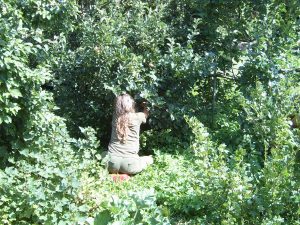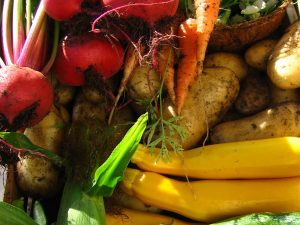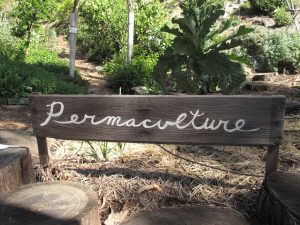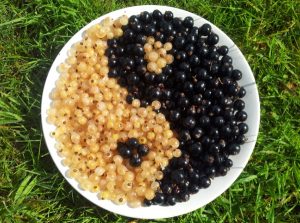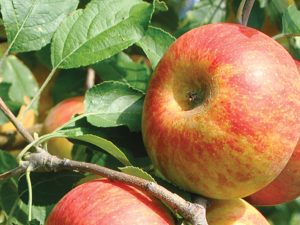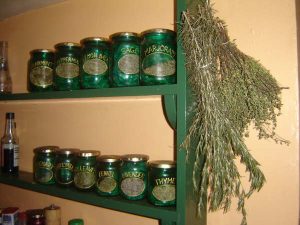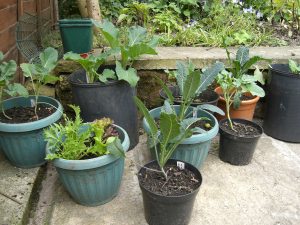Seed saving - introduction
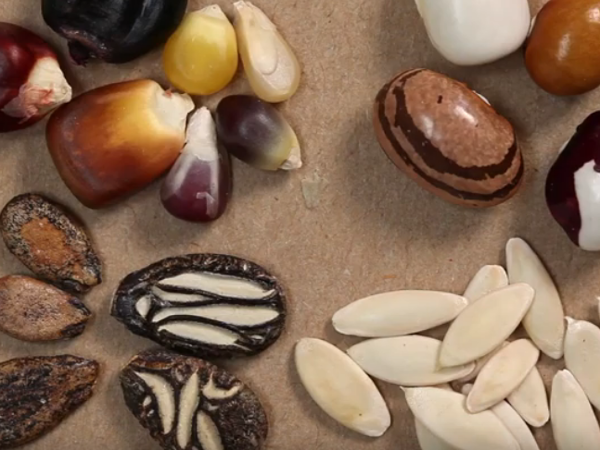
“Seeds have the power to preserve species, to enhance cultural as well as genetic diversity, to counter economic monopoly and to check the advance of conformity on all its many fronts.” – Michael Pollan
Contents
What is seed saving?
Seed saving is all about collecting and storing the seeds from your favourite fruit and veg, to grow them again in the future, or to swap them. Some seeds will be present in the fruit and veg themselves – tomatoes, pumpkins, beans etc, and some plants have to be left to ‘go to seed’.

A fennel plant ‘gone to seed’.
People have always saved and swapped seeds, and travelling seed merchants spread them around the country. Seed catalogues are a recent phenomenon. In the 1920s, seeds started to be standardised via government legislation, as people were giving all sorts of local names to the same seeds. Today you can still find ‘standard seed’ written on seed packets. This resulted in a huge loss of diversity as many unique, local varieties disappeared.
In the 1960s, there were still lots of small seed companies, and each one offered a wide range of seeds – 30 different varieties of carrots, 20 of onions etc. But EU legislation standardised and restricted varieties in national lists, so that customers knew exactly what they were getting. Consumer protection might have been a noble aim, but in the process, a lot of diversity, interest, quirkiness and fun was lost. The seed industry was standardised and centralised, small companies went under, big companies got bigger, offering only a small range of seeds specially for large-scale growers, and culminating in the current attempts of the GM multinationals to control our food supply.

Small seeds shouldn’t take up too much room in your fridge, unless you’re doing it commercially of course, in which case you’ll have several fridges looking like this.
Some people continued to save their own seed however – because they knew they wouldn’t be able to get them again if they were lost. Now, organisations like Garden Organic are calling on all gardeners to send them samples of seeds passed down through their family / local areas. They uncovered many thousands of old varieties, which have been named and added to the Heritage Seed Library.
Seeds overview – DIY Seeds.
What are the benefits of seed saving?
- You don’t have to buy seeds.
- You’ll have seeds that suit your local topography, soil and climate.
- ‘Amateur’, non-standard, local seeds passed down from generation to generation are known as heirloom varieties – they are ‘open pollinators’ (nature produces the seeds, as opposed to seed companies deliberately choosing parent plants), which makes them genetically very strong, and able to withstand wet conditions, drought, pests or disease more than ‘inbred’ standard seeds.
- Amateur varieties are natural plants, not genetically modified or hybridised by a large company; they tend to be grown organically, and so send their roots further down into the soil to get the nutrients they need, when they need them, and to provide more nutritious food than non-organic, where fertilisers are placed on top of the soil, encouraging shallower roots.
- Local garden varieties have a much longer harvesting time, providing fresh food throughout more of the year; and they tend to be taller, and so can be harvested from lower down the plant first, then from higher up later on.
- Once varieties are gone, they’re gone – there will be a loss of diversity that is not only a great shame in terms of taste and interest, but will result in our food supply being more susceptible to pests or disease in future. Gene banks can preserve seeds, but there are not enough of them, and sometimes they are closed due to lack of funding. The only way to maintain diversity is to grow, save and swap seeds ourselves.

A handful of dried tomato seeds.
And finally, perhaps the greatest benefit of saved seeds is that they are not genetically modified (GM). Now this is a huge subject, but here’s a quick summary. The GM industry is about standardisation par excellence – the enemy of seed saving – as well as (of course) enriching the enormous and already extremely wealthy biotech companies. Their vision for food production is of vast fields of just one crop, the seeds of which are owned by just one company – a disaster in terms of diversity, food security, ecology and control of our food supply. Often you can’t save the seed of GM crops at all – so-called ‘terminator genes’ have been spliced into them so that the seeds are not viable, and farmers have to go back to the GM companies to buy more. In Iraq, companies like Monsanto monopolised the supply of seeds after the war, and the US prevented Iraqis from using their own seeds. They can never get their seed heritage back – the longest seed heritage in the world – over 10,000 years, as Iraq is where agriculture began. Who knew this was happening? Well, it’s happening everywhere – it’s just that the Iraq war gave GM companies the opportunity to do it wholesale via the direct control of a country and its legal system. See here, here and here for more information, or just search for Iraq/Monsanto.

Dreary monoculture – ideal for GM multinationals, but a terrible idea for sustainability, diversity, soil fertility and food security.
What can I do?
You can get warmed up by attending seed swap events that are held all over the country, and in fact, all over the world (search for seed swap and the name of your town). They’re not just for people who have seeds already – you can still take part by making a donation to a relevant charity. You’ll be able to meet and get advice from lots of keen gardeners. At the big ones – like the one in Brighton, for example – you’ll be able to listen to specially-invited speakers too. These events are important because it’s now illegal to sell unusual seeds that are not on official national lists, and this is a way of guaranteeing their survival.
How to select plants for seed production – DIY Seeds.
There are potato days as well (search for potato day and the name of your town or county) – and these events usually include seed-swap tables. Seed potatoes are not swapped at these events but they are for sale – sometimes as many as 100 varieties of them. As well as the seed-swapping that goes on, other vegetables seeds are for sale, and there are plenty of keen gardeners willing to give advice on growing.
Wakehurst Place in Sussex is well worth a visit too. It is the home of the Millennium Seed Bank, containing the seeds of around a fifth of all the world’s plants, including trees.

It’s not just food plants that you can save seed from – this is flax, used to make linen.
Then, well, just have a go. If you make mistakes, it’s not a disaster, and you’ll learn as you go. Each plant will be different in terms of harvesting, extracting, drying, storing and planting seeds. For example, some plants are self-pollinating (peas, tomatoes, French beans), whilst others can be easily cross-pollinated by insects with other varieties (onions, beetroot, spinach), so your seed may not be exactly what you’re expecting. Also, some vegetables are biennial, producing flowers and seed in their second year of growth (carrots, chard, beetroot). For details of specific plants you’ll need a book (see resources), or check out Garden Organic’s seed saving guidelines for most common vegetables, or DIY Seeds videos, or you can attend a course for some practical seed saving experience.

Find out where your nearest seed swap event is being held – this one is in Stoke Newington.
Growing for seed is different from growing for food. You could leave the end plant on every row to go to seed, but make sure they’re strong-looking specimens. When it comes to collecting, it’s not always obvious what’s the seed and what’s the chaff. Once you’ve worked it out, after harvesting, shelling (if necessary) and drying, label the seeds and put into cold storage. This makes the seed go into dormancy – nature’s way of stopping the seed germinating until the next season. Some families of seed can be stored for longer than others. Parsnips, for example, can only really be stored for one season – so it’s best to grow your own to make sure that they’re viable. At the other extreme, seeds of the cabbage family will store for 7 years – and everything else is between these two.
Extraction, wet-processing, drying and sorting of seeds – DIY Seeds.
Here’s some seed saving advice for a couple of veg – tomatoes and beans.
Tomatoes – let them go quite squishy on the plant, then pick and scoop out the seeds and put in a saucer with a bit of water. Leave for 5 days until a mould starts to form. Sieve off the mouldy gunge, dry on a tablecloth for a few days, then pack, label and store in the fridge.
For big seeds like peas and beans, pick around October when the pods are papery and dry, and you can maybe hear the beans rattling inside. Bring indoors, spread on trays or plates and leave them on a cool, dry shelf (not in direct sunlight) for about two months, turning them every few days. Big seeds have a lot of moisture, which takes a long time to come down. A good way of telling if they’re really dry is if they make a ‘ping’ instead of a ‘thud’ when you drop them on a plate.

Parsnip seeds after drying – about to be extracted and stored.
Big seeds may be too big to store in the fridge. Keep them in brown paper bags in an unheated room. Small seeds can be kept in a fridge, between 5 and 13°C. Small seeds won’t take up much room in your fridge unless you’re doing it commercially.
Finally, you might think of starting a local seed library. Here’s how they did it in Lampeter, in Wales.
Specialist(s)
Thanks to Pippa Rosen of Beans & Herbs for information.
The specialist(s) below will respond to queries on this topic. Please comment in the box at the bottom of the page.
 Pippa Rosen runs Beans & Herbs, who encourage seed-saving by offering only open-pollinated seeds grown by time-honoured, traditional methods. They never supply gene-modified seed, or F1 hybrid seed which cannot be reliably regenerated. Her aim is to promote food self-sufficiency so that people can take control over at least some of their own food supply.
Pippa Rosen runs Beans & Herbs, who encourage seed-saving by offering only open-pollinated seeds grown by time-honoured, traditional methods. They never supply gene-modified seed, or F1 hybrid seed which cannot be reliably regenerated. Her aim is to promote food self-sufficiency so that people can take control over at least some of their own food supply.

